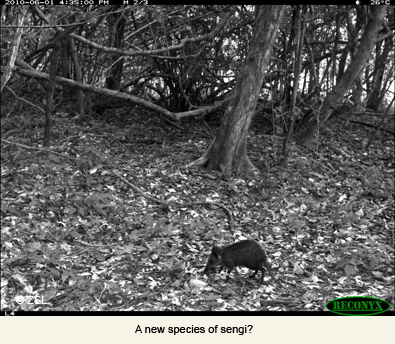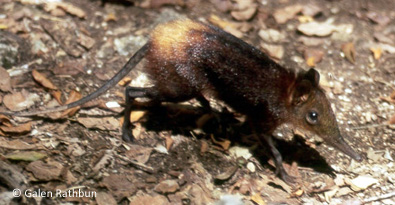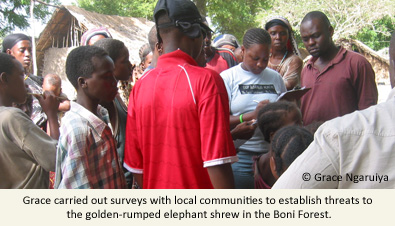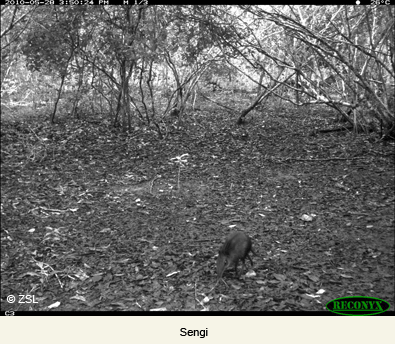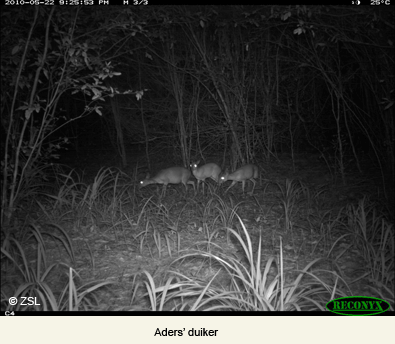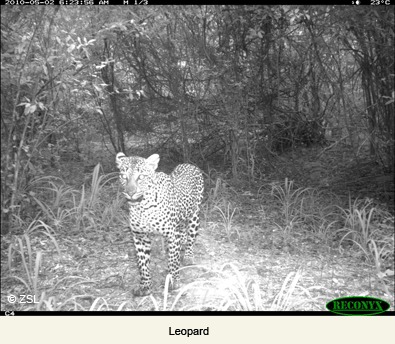When Kenyan EDGE Fellow Grace Wambui was awarded an EDGE Fellowship to study the golden-rumped elephant-shrew, she had little idea that she would discover a mammal that is potentially new to science.
The golden-rumped elephant-shrew (also known as the golden-rumped sengi) is the most threatened of the four currently recognised species of giant elephant-shrew. It is endemic to the highly fragmented coastal forests of eastern Kenya and is currently listed as Endangered on the IUCN Red List because its habitat is small, fragmented and continuing to decline.
Grace began her project in the Arabuko-Sokoke Forest, the golden-rumped sengi’s last known stronghold, before moving further north to the poorly-known Boni and Dodori forests on the coast of north-eastern Kenya. The EDGE team had heard reports of sengis in the region and Grace was keen to investigate whether these forests could be an additional stronghold for the golden-rumped elephant-shrew. We were very excited about the prospect of finding them – if the species occurred here in sufficient numbers then its survival prospects would be a lot more promising.
The biodiversity of the Boni-Dodori forests was very poorly-known at the time of Grace’s study. Security problems and poor infrastructure meant that few scientists had had the opportunity to document the fauna and flora of the area.
Through carrying out survey work and interviews with local community members Grace was able to confirm the presence of sengi in the forest. But there was definitely something different about this sengi. For a start, no-one she interviewed mentioned the golden-rumped elephant-shrew’s most distinguishing feature – the bright yellow patch of fur on its rump!
Grace’s fleeting glimpse of the Boni sengi was enough to convince her that she was dealing with something unexpected. She called in reinforcements from the Kenya Wildlife Service and Zoological Society of London to carry out more extensive surveys of the area in the hope of identifying the mysterious sengi.
Scientists on the survey spent hours battling through the thick bush to place a network of camera traps throughout the forest. 50 days later their efforts were rewarded as they captured an incredible array of animals on camera – including the elusive sengi.
The scientists were also able to observe the new sengi first hand and document a number of distinguishing features. The next step is to collect DNA samples so that genetic analysis can be carried out to determine whether or not this is indeed a new species of elephant-shrew.
The findings of the expedition highlight the conservation importance of these unique coastal forests. Although still relatively pristine, these isolated forests are now highly threatened by ongoing rapid coastal development and there is an urgent need for an effective conservation strategy to protect both the new sengi and the forest’s other unique inhabitants.
As for the golden-rumped sengi, its future is in our hands. Given that its range is likely now even smaller than we thought, continued conservation is more important than ever. To find out more about this species and its conservation needs visit here
To make a donation towards the vital work of the EDGE programme in raising awareness and initiating conservation of the world’s most unique and threatened species please visit Support
We would like to thank all of our partners and collaborators, without whom this discovery would not have been made:
Kenya Wildlife Service (KWS)
The California Academy of Sciences (CAS)
National Museums of Kenya (NMK)
The Afrotheria Specialist Group (ASG)
And last but certainly not least, Galen Rathbun and Clare FitzGibbon for ongoing support and guidance throughout the project.
